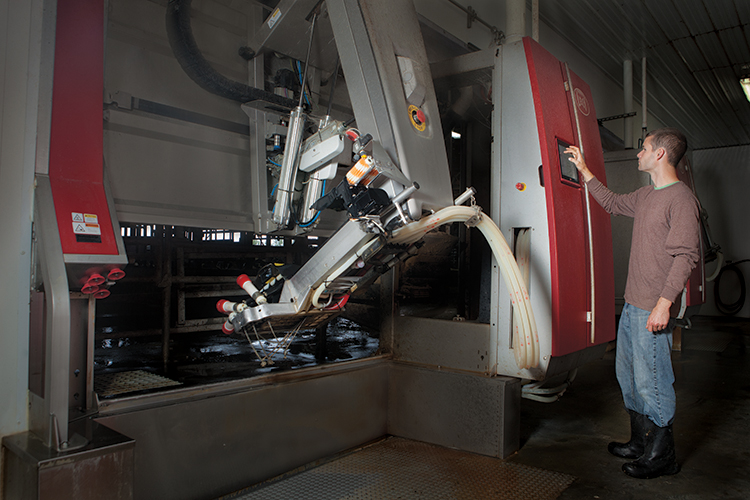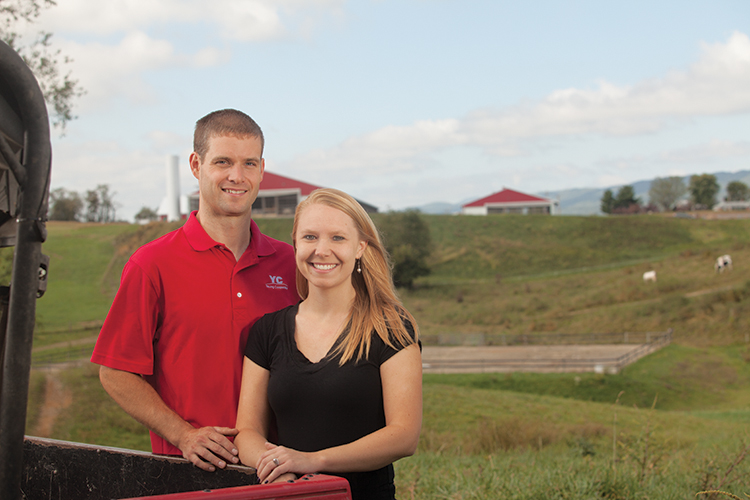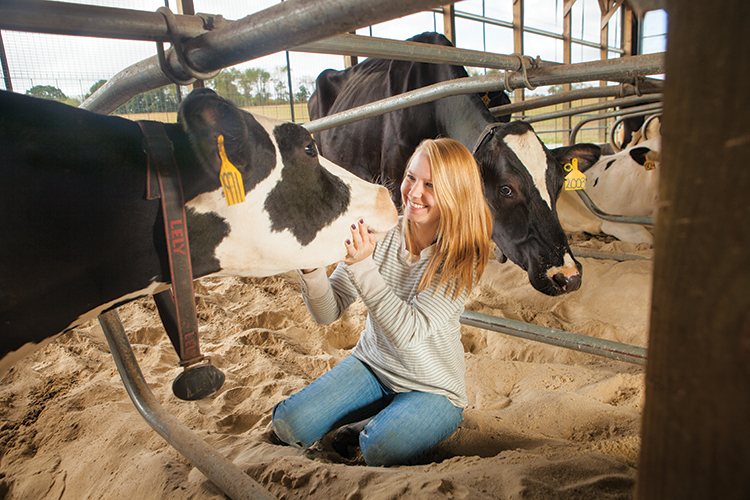Home > Virginia > Virginia Crops & Livestock > Daring Dairy in Virginia
Daring Dairy in Virginia
In partnership with: Virginia Department of Agriculture and Consumer Services

For Virginia’s dairy farmers, happy cows, sustainable solutions and innovation are the keys to success. Some of those innovations include futuristic-looking milking machines that are changing the face of the dairy industry.
Change Is Good
Scott and Laura Flory, who operate Pulaski County’s Hillside Farm in Dublin with Scott’s parents, Janet and Dale, understand change and adaptation well. The young couple – Scott, 28, and Laura, 26 – decided to transition their traditional dairy operation into a robotic dairy farm in late 2014. Both are dairy science graduates of Virginia Tech.
Robotic dairy machinery eliminates the need for manual milking and allows cows to be milked when they feel their udders are full by walking up to the robot. “Our farm has been in my mom’s family since the late 1700s,” says Scott Flory. “The original dairy operation started in the 1980s, and we’ve been milking about 110 cows. After my wife and I got married, we started doing some research and planning, and found that a robotic dairy would fit our family and business goals for the size of our operation. We liked it for the advantages for our cows as well as people.”

How It Works
The farm also produces row crops and beef, but the transition to a robotic dairy operation has made Hillside Farm one of only 11 dairy farms in Virginia using this type of equipment. The farm has been able to double the size of its herd without increasing its workforce.
Hillside Farm’s cows have access to the robots that milk the cows up to six times per day and clean them after. Where the farm used to milk their cows two to three times per day, they now milk whenever the cow feels she needs to be. Flory says they’ve seen a 15 percent production increase since transitioning to a robotic dairy.
“The cows have free choice of eating as much forage mix as they choose; they have a choice of which straw they want to lay on. And they have access to the robots when they want it. They each wear an identification collar that is scanned when they walk up to a robot. They come for the grain and get milked up to six times per day,” Flory says.
He adds that they haven’t seen many cons with the system, but there are things to get used to.
“It’s flexible since we’re not tied down to milking, but it’s getting the cows used to a schedule and someone needs to be available to make sure everything is running properly. It’s not a negative, just a difference,” he says.

Dairy Strong
Dairy is an important industry for Virginia, with milk ranking as the No. 3 agricultural commodity, bringing in $478 million in cash receipts to dairy producers in 2014. Fluid milk, butter, cheese, ice cream and condensed milk product manufacturing are also included in the state’s dairy industry. It’s smaller in comparison to other dairy states but has a large impact on Virginia’s overall agriculture. According to the Weldon Cooper Center for Public Service at the University of Virginia, Virginia’s dairy industry as a whole contributed about $3.2 billion in economic activity in 2014. Most dairy farms are concentrated in the Shenandoah Valley and southwest regions of the state because of optimal foraging supply and existing dairy infrastructure.
“The Southeastern region of the U.S. is growing in terms of dairy,” Flory says. “We have a really good market, and I don’t think that’s going away any time soon. As for our farm, the robotic dairy is still relatively new, so we’re getting the kinks out, fine-tuning some things and always looking at how we can improve.”



